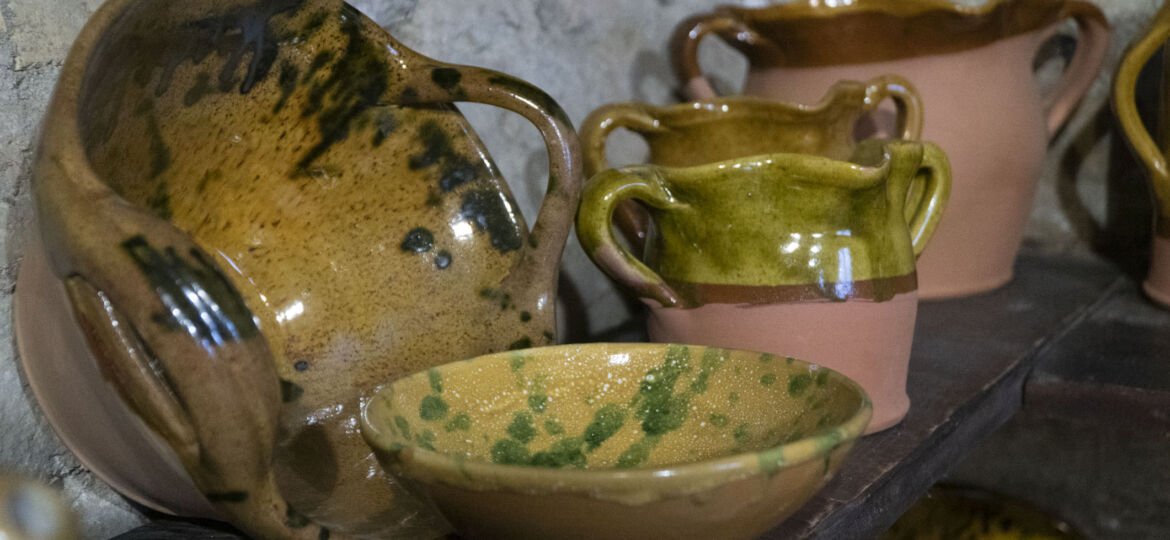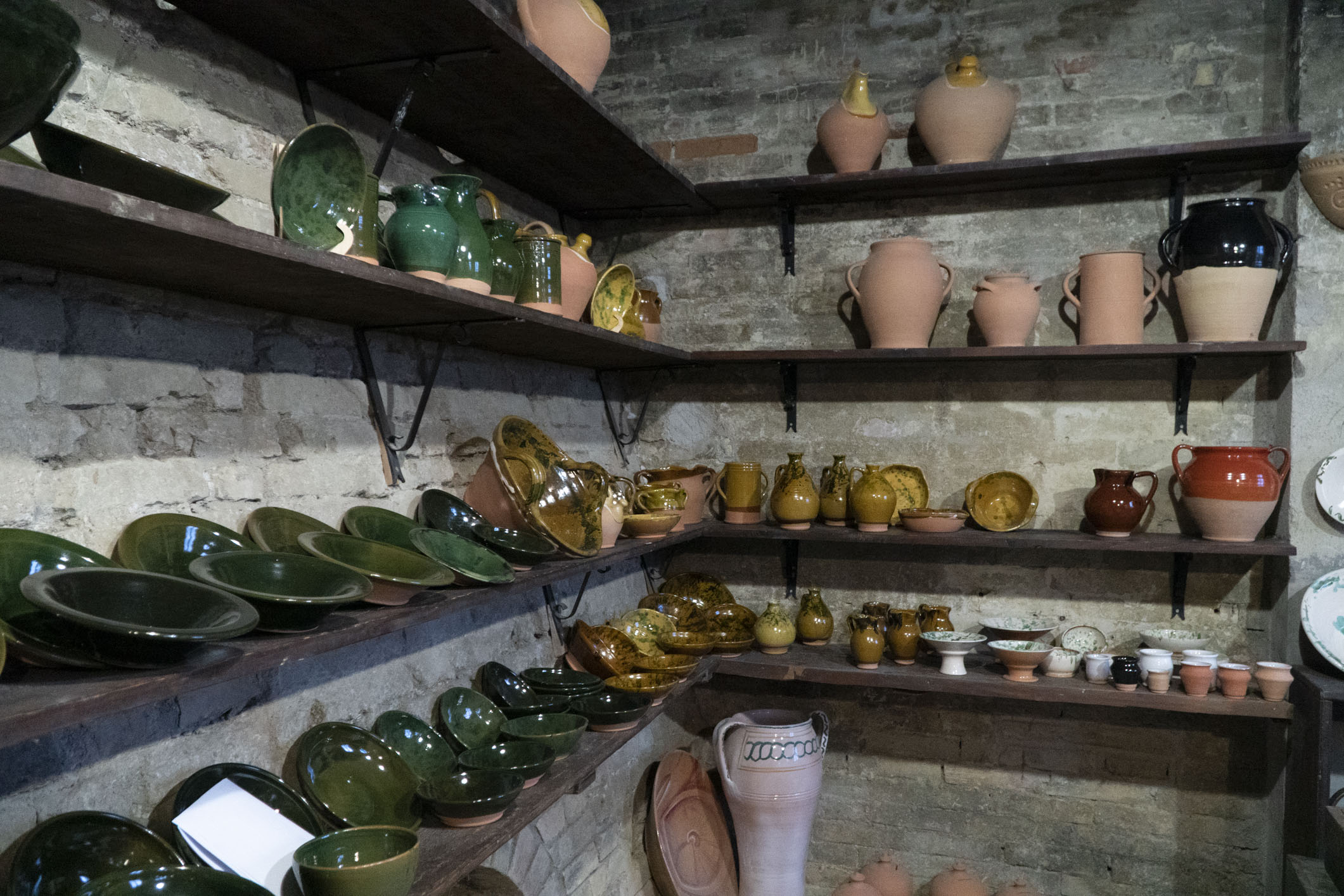
The journey into the potters’ workshop to discover the rules of color in traditional earthenware continues.
Where were we…? We were about to delve more specifically into the subject of the color of rustic terracotta, the rules and meanings of the different pigments, with some technical nods to the color bath as per the tradition of the Marche potters.
Here, then, in the terracottas of Montottone (FM), the colors yellow and brown are traditionally used for jugs, pans, plates, and tankards. The warm colors cover the signs of wear and tear on these artifacts used in the home, for as long as possible, to hold, store, and cook a variety of foods and beverages.
Green is used to waterproof the interiors of liquid storage containers or to maculate basins and buckets: anything that is to contain water is pigmented with green to mask its marks over time.
In contrast, black, a pigment that is particularly expensive because of itshigh iron oxide content and the time required to prepare it, is the color of everyday but more valuable objects intended for a wealthy and demanding clientele.
And now, some fundamentals of technique for color bathing of terracottas.
The technique applied is that of casting. The practice of coloring is done by one quick and skillful gesture. Supporting the object with one hand, the potter throws the color inside the object with the other. A quick spin removes the excess paint, and a sudden jerk releases the liquid from the container.
Traditionally, and always according to criteria of functionality and practicality, while theinside of the artifacts was always painted completely, to make it waterproof, on the outside, also for reasons of saving paint, a good part was often left raw, giving the typical “parnance.”
It was a small painted area in the shape of an apron that served to waterproof especially the area near the beak of the mugs, to prevent the object from being ruined by drips.
This partial coloring, with a subsequent glazing on the outside, also gave the potter the ability to easily handle the finished objects and to fire them by arranging them in contact with each other.


